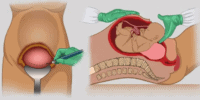What Is Woman Sexual Dysfunction Types and Treatment

In a world where sexual health plays a vital role in overall well-being, understanding and addressing woman sexual dysfunction is of utmost importance.
Delving into the different types of this condition and exploring effective treatment options can empower women to reclaim control over their sexual lives.
This article aims to provide a comprehensive guide, shedding light on the causes, symptoms, diagnosis, and treatment of woman sexual dysfunction.
By offering valuable insights, we aspire to assist our audience in achieving a fulfilling and satisfying sexual experience.
Key Takeaways
- Woman sexual dysfunction encompasses several types, including female sexual arousal disorder, female orgasmic disorder, and genito-pelvic pain/penetration disorder.
- The causes of woman sexual dysfunction can be physical factors such as hormonal imbalances and chronic medical conditions, as well as psychological factors like stress, anxiety, and past trauma.
- It is important to recognize the signs and symptoms of woman sexual dysfunction and seek appropriate diagnosis and evaluation, which may include a comprehensive medical history, physical examination, and validated questionnaires.
- Treatment options for woman sexual dysfunction can include medication-based interventions, therapy-based interventions, lifestyle changes, self-care strategies, counseling support, and medical interventions, depending on individual needs and preferences.
Understanding the Different Types of Woman Sexual Dysfunction
Examining the various manifestations of woman sexual dysfunction through a comprehensive understanding of the different types can help guide effective treatment strategies. It is important to address common misconceptions surrounding this topic in order to provide accurate information and support to those affected.
Woman sexual dysfunction encompasses a range of conditions, including female sexual arousal disorder, female orgasmic disorder, and genito-pelvic pain/penetration disorder. These conditions can have a significant impact on relationships, causing distress and frustration for both partners.
Understanding the specific type of sexual dysfunction that a woman is experiencing is crucial in developing appropriate treatment plans. By debunking misconceptions and acknowledging the impact on relationships, healthcare professionals can provide a compassionate and supportive environment for women seeking help for their sexual concerns.
Causes and Risk Factors of Woman Sexual Dysfunction
Identifying the underlying causes and assessing the risk factors of woman sexual dysfunction are essential steps in developing effective treatment approaches. Understanding the causes and risk factors can help healthcare professionals provide targeted interventions to improve sexual functioning and overall well-being in women.
Causes and prevention of woman sexual dysfunction include:
- Physical factors:
- Hormonal imbalances
- Chronic medical conditions (e.g., diabetes, cardiovascular disease)
- Medications (e.g., antidepressants, hormonal contraceptives)
- Psychological factors:
- Stress and anxiety
- Past trauma or abuse
- Body image issues
The impact of woman sexual dysfunction on relationships cannot be overlooked. It can lead to decreased intimacy, communication issues, and decreased relationship satisfaction. Addressing the underlying causes and implementing preventive measures is crucial in maintaining healthy relationships.
Signs and Symptoms of Woman Sexual Dysfunction
The presence of the article determiner 'the' is clear in the sentence. The current discussion topic focuses on the signs and symptoms of woman sexual dysfunction. It is important to understand the impact this condition can have on relationships and the psychological factors that may contribute to it.
Woman sexual dysfunction can significantly affect intimate relationships, leading to feelings of frustration, dissatisfaction, and even strain. Psychological factors such as stress, anxiety, depression, and body image issues can play a role in the development and exacerbation of this condition.
Recognizing the signs and symptoms of woman sexual dysfunction is crucial in order to seek appropriate diagnosis and evaluation. Understanding these indicators will allow for a comprehensive assessment and the identification of the most suitable treatment options.
In the following section, we will explore the diagnosis and evaluation of woman sexual dysfunction.
Diagnosis and Evaluation of Woman Sexual Dysfunction
Three main components are essential for the accurate diagnosis and evaluation of woman sexual dysfunction: a comprehensive medical history, a thorough physical examination, and the use of validated questionnaires.
- Medical History:
Gathering detailed information about the patient's sexual concerns, medical conditions, medications, and psychological factors.
Assessing the impact of sexual dysfunction on the patient's overall quality of life.
- Physical Examination:
Examining the patient's pelvic region to identify any physical abnormalities or signs of underlying medical conditions.
Evaluating hormonal levels, blood flow, and nerve function to determine potential causes of sexual dysfunction.
Validated Questionnaires:
Utilizing standardized questionnaires to assess the severity of symptoms and measure the impact of sexual dysfunction on the patient's life.
Accurate sexual dysfunction assessment is crucial for developing appropriate treatment options.
Transition: Now that we have discussed the diagnosis and evaluation process, let's explore the available treatment options for woman sexual dysfunction.
Treatment Options for Woman Sexual Dysfunction
When it comes to treating woman sexual dysfunction, there are various options available. These can include medication or therapy, depending on the specific needs of the individual.
Additionally, alternative treatment methods may also be considered.
Now, let's discuss the different points related to these treatment options.
Medication or Therapy
Numerous studies have shown that both medication and therapy can be effective in treating woman sexual dysfunction. When it comes to the treatment of woman sexual dysfunction, there are various options available. Here are some key points to consider:
- Medication-based interventions:
- Hormone therapy: Adjusting hormone levels can help address underlying hormonal imbalances that contribute to sexual dysfunction.
- Medications for specific symptoms: Certain medications, such as those targeting low libido or vaginal dryness, can alleviate specific symptoms.
- Therapy-based interventions:
- Behavioral interventions: Techniques like cognitive-behavioral therapy can help address psychological factors that contribute to sexual dysfunction.
- Non-pharmacological approaches: Therapies like sex therapy or couples counseling can improve communication, address relationship issues, and enhance sexual satisfaction.
It is important to note that the choice between medication and therapy depends on the individual's specific needs, preferences, and the underlying causes of their sexual dysfunction. A comprehensive approach that combines both medication and therapy may provide the best outcomes for women seeking treatment.
Alternative Treatment Methods?
One alternative treatment method for woman sexual dysfunction is incorporating mindfulness techniques, such as meditation or yoga, to reduce stress and promote overall well-being. Psychological approaches can be effective in addressing the underlying causes of sexual dysfunction, which may include anxiety, depression, or relationship issues. By practicing mindfulness, individuals can learn to be present in the moment, allowing them to focus on their sensations and emotions without judgment or distraction. This can help to reduce stress and anxiety, which are common factors contributing to sexual dysfunction.
In addition to mindfulness techniques, some individuals may find relief from woman sexual dysfunction through the use of herbal remedies. Certain herbs, such as ginseng or maca root, have been traditionally used to enhance sexual function and desire. However, it is important to consult with a healthcare professional before incorporating any herbal remedies into a treatment plan.
Lifestyle Changes and Self-Care Strategies for Managing Woman Sexual Dysfunction
Several effective lifestyle changes and self-care strategies can be implemented to manage woman sexual dysfunction. It is important to note that woman sexual dysfunction can have various causes, including physical, psychological, and hormonal factors. Here are some natural remedies and counseling support options that can be helpful:
- Lifestyle Changes:
- Regular exercise and physical activity can help improve overall sexual function and boost self-confidence.
- A healthy diet rich in fruits, vegetables, whole grains, and lean proteins can enhance sexual health.
- Self-Care Strategies:
- Stress management techniques such as relaxation exercises, meditation, and deep breathing can reduce anxiety and improve sexual function.
- Open communication with your partner can help build trust and create a supportive environment.
In addition to these lifestyle changes and self-care strategies, counseling support can play a crucial role in managing woman sexual dysfunction. Professional therapists can provide guidance, support, and techniques to address underlying psychological issues that may contribute to sexual dysfunction. It is important to consult with a healthcare professional to determine the best course of action for individual needs.
Frequently Asked Questions
Are There Any Natural Remedies or Alternative Treatments Available for Woman Sexual Dysfunction?
Natural remedies and alternative treatments can be beneficial for addressing woman sexual dysfunction. These options, which may include herbal supplements, lifestyle changes, and therapy, can provide a holistic approach to improving sexual health and well-being.
Can Woman Sexual Dysfunction Be Completely Cured or Is It a Lifelong Condition?
Woman sexual dysfunction is a complex condition with various causes. While it can be managed effectively through a combination of therapy, lifestyle changes, and medication, a complete cure may not be possible for everyone, making it a potentially lifelong condition.
Is There a Specific Age Range Where Woman Sexual Dysfunction Is More Common?
The prevalence of woman sexual dysfunction can vary across different age ranges, with certain factors contributing to its occurrence. It is important to understand the specific age range where this condition is more common in order to effectively address and treat it.
Are There Any Medications That Can Worsen or Contribute to Woman Sexual Dysfunction?
Certain medications can worsen or contribute to woman sexual dysfunction. It is estimated that up to 25% of women may experience sexual dysfunction as a result of medication side effects. Common causes include antidepressants, hormonal contraceptives, and blood pressure medications.
How Does Woman Sexual Dysfunction Affect a Woman's Overall Well-Being and Quality of Life?
Woman sexual dysfunction can have a significant impact on a woman's overall well-being and quality of life. It can lead to difficulties in intimate relationships and cause psychological effects such as low self-esteem and decreased sexual satisfaction.








